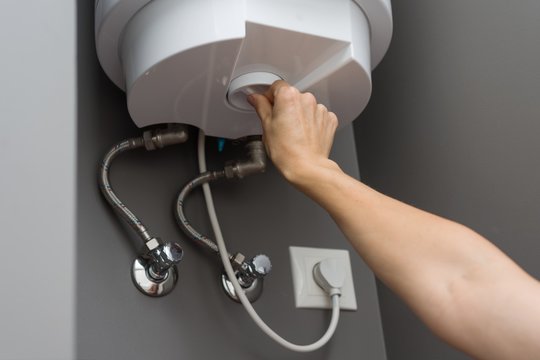Ways to Maintain Your Home's Hot Water System in Good Condition
Ways to Maintain Your Home's Hot Water System in Good Condition
Blog Article
This post directly below about How to Maintain a Hot Water Heater in a Few Simple Steps is incredibly insightful. Try it and make your own personal conclusions.

Warm water is essential for day-to-day comfort, whether it's for a revitalizing shower or cleaning dishes. To guarantee your warm water system runs efficiently and lasts much longer, routine maintenance is vital. This short article gives functional suggestions and understandings on exactly how to maintain your home's warm water system to prevent disruptions and expensive repair work.
Intro
Preserving your home's hot water system may seem overwhelming, however with a few basic steps, you can guarantee it operates efficiently for many years to find. This guide covers every little thing from understanding your hot water system to do it yourself maintenance ideas and knowing when to call professional aid.
Significance of Preserving Your Hot Water System
Routine upkeep not only expands the life expectancy of your hot water system yet also guarantees it operates successfully. Overlooking upkeep can cause reduced performance, higher power bills, and even early failure of the system.
Indications Your Warm Water System Requirements Upkeep
Knowing when your hot water system requires attention can stop significant issues. Watch out for indicators such as inconsistent water temperature level, odd sounds from the heater, or rustic water.
Recognizing Your Warm Water System
Before diving into upkeep jobs, it's useful to comprehend the basic elements of your warm water system. Commonly, this includes the water heater itself, pipelines, anode poles, and temperature controls.
Regular Monthly Upkeep Tasks
Normal monthly checks can aid catch minor problems prior to they rise.
Flushing the Water Heater
Flushing your hot water heater gets rid of debris buildup, improving effectiveness and extending its life.
Monitoring and Changing Anode Rods
Anode poles prevent corrosion inside the storage tank. Examining and replacing them when worn out is important.
Checking and Readjusting Temperature Level Setups
Readjusting the temperature settings ensures optimal performance and security.
DIY Tips for Maintenance
You can do a number of upkeep jobs on your own to maintain your warm water system in leading problem.
Looking for Leakages
On a regular basis examine pipes and connections for leaks, as these can result in water damage and higher bills.
Evaluating Pressure Relief Valves
Testing the pressure safety valve guarantees it operates appropriately and protects against too much stress accumulation.
Protecting Pipes
Protecting warm water pipes decreases heat loss and can save power.
When to Call a Specialist
While do it yourself upkeep is useful, some issues require professional experience.
Facility Concerns Needing Expert Help
Instances consist of significant leaks, electrical troubles, or if your hot water heater is constantly underperforming.
Routine Specialist Maintenance Perks
Specialist upkeep can include complete evaluations, tune-ups, and ensuring conformity with safety and security standards.
Conclusion
Routine maintenance of your home's hot water system is essential for effectiveness, longevity, and expense savings. By following these pointers and understanding when to look for expert help, you can make certain a trustworthy supply of hot water without unexpected disturbances.
How to Maintain an Instant Hot Water Heater
Before tinkering with your hot water heater, make sure that it’s not powered on. You also have to turn off the main circuit breaker and shut off the main gas line to prevent accidents. Also turn off the water valves connected to your unit to prevent water from flowing into and out of the appliance. 2. When you’re done, you have to detach the purge valves’ caps. These look like the letter “T†and are situated on either side of the water valves. Doing so will release any pressure that has accumulated inside the valves while at the same time avoid hot water from shooting out and burning your skin. 3. When the purge valves’ caps are removed, you have to connect your hosing lines to the valves. Your unit should have come with three hoses but if it didn’t, you can purchase these things from any hardware or home repair shops. You can also get them from retail stores that sell water heating systems. Read the user’s manual and follow it to complete this task properly. When the hosing lines are connected, open the purge port’s valves. 4. You should never use harsh chemical cleaners or solutions when cleaning your unit. Make use of white vinegar instead. It should be undiluted and you’ll probably use about 2 gallons. 5. Now flush your water heater. This task should probably take about 40 minutes. We can’t give you specific directions for this because the procedure is carried out depending on the type, model and brand of your heater. With that being said, refer to the user’s manual. 6. When you’re done draining the unit, you have to turn off the purge port valves again. Remove the hosing lines that you earlier installed on each of the water valves. Put the valve caps (purge port) back in their respective places and be very careful so as not to damage the rubber discs that are found inside these caps. 7. Now that everything’s back in place, check your user’s manual again to find out how to reactivate your water heating system. 8. Once it is working, turn one of your hot water faucets on just to let air pass through the heater’s water supply pipes. Leave the tap on until water flows smoothly out of it. https://www.orrplumbing.com/blog/2014/september/how-to-maintain-an-instant-hot-water-heater/

I am just very excited about Tips For Maintaining Your Hot Water Heater and I really hope you appreciated the article. Sharing is caring. Helping people is fun. We take joy in reading our article about Tips on Maintaining a Water Heater.
Book Service Report this page